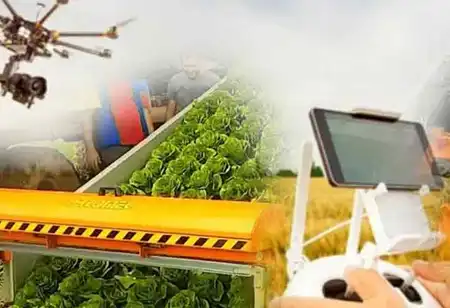Thank you for Subscribing to Agri Business Review Weekly Brief
Advantages of Investing in Farmland
Investing in the stock market is one way to secure the future. There's another option that many investors overlook while investing in stocks and bonds. The value of farmland steadily increases over time because it is a scarce commodity.

By
Agri Business Review | Thursday, December 01, 2022
Stay ahead of the industry with exclusive feature stories on the top companies, expert insights and the latest news delivered straight to your inbox. Subscribe today.
Investing in the stock market is one way to secure the future. There's another option that many investors overlook while investing in stocks and bonds. The value of farmland steadily increases over time because it is a scarce commodity.
FREMONT, CA: In recent months, inflation has surpassed 8 percent, prompting investors to seek investment protection and risk mitigation. Several conventional financial methods will be considered risky investments in the coming year. Investors seeking to continue their expansion may pursue unorthodox possibilities to increase returns. While real estate may appear to be the most apparent investment when constructing a portfolio, agricultural land is sometimes an ignored and uncorrelated asset type to investigate.
Investors need options regarding how and where to look to make money back on their money. Many people do this through mutual funds, exchange-traded funds (ETFs), real estate, stocks, and bonds. These are just some of the most familiar ways to invest, but there are many more. These other types of investments, called "alternative investments," can provide value and growth in ways traditional market-based investments can't.
The world of alternative investments is big, and finding the right one for a portfolio can initially seem complicated. Farming could be the right choice if investors want to invest in something stable and long-term that combines the benefits of real estate, bonds, managed funds, and commodities.
Investing in farmland has many benefits, some of which are similar to those of other well-known investments. Even better, investing in farmland has several advantages over other investments. These can include getting more for the investment dollar, higher returns, more options, and more.
This is just the beginning of how investing in farmland can help investors. Here are some best reasons why most people should invest in farmland:
PREPARING FOR INFLATION
It can be challenging for the average investor to find good protection against inflation. This task gets a lot harder when investors add in a volatile market and interest rates close to zero. Smart investors usually look for safety in investments that protect against inflation. These investments can give investors a position less affected by inflation or make money when inflation increases.
In simple terms, these investments ensure that money's value stays the same over time as the price of goods and services. Most of the time, these investments are real, like houses, precious metals, farmland, or collectibles. When prices go up because of inflation, these assets are worth more than they were before. This means that investments to protect against inflation can help reduce risk in other parts of the portfolio. This makes them a very important asset to hold.
Regarding investments that protect against inflation, gold and Treasury Inflation-Protected Securities are the two main ones. Here are the pros and cons of farmland compared to the other two.
Check Out This: Top Treasury Management Solutions Companies
HIGH YIELDS
High-yield investments hold a solid position in the majority of investment portfolios. The consistent performance, built-in demand, and inflation-resistant characteristics of farmland make it an excellent option for investors seeking high-yield assets. Performance over the long run is excellent, but maintaining an asset that generates regular annual income is even better.
Over the past two decades, farmland has provided strong returns for investors. Row crop property has continuously generated a cash yield between 4 and 8 percent, which is uncommon among dividend-paying investments. These benefits are not limited to annual crop production alone. Billboards, hunting leases, wood sales, and renewable energy contribute to many farms' income. As a partial owner, this income represents a high-yielding portfolio investment.
Even when adjusting for factors such as crop yield size, crop pricing, weather conditions, and natural disasters, farmland has regularly produced returns of over 10 percent over the past decade. This indicates that cropland has a track record of consistent performance, even when external conditions cause difficulties for the agriculture sector. If current conditions persist, investment in farmland will likely experience comparable growth if past performance is any indication.
Farmland offers regular annual returns, but its totals frequently exceed those of other dividend-paying investments. Industrial goods stocks in the S&P 500 have an average dividend yield of 1.76 percent, but their highest yield was 2 percent. This indicates that the typical agricultural investment will beat dividend-paying stocks by a factor of two to three, making money work harder for investors.





